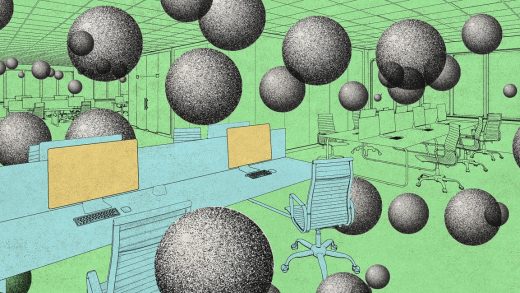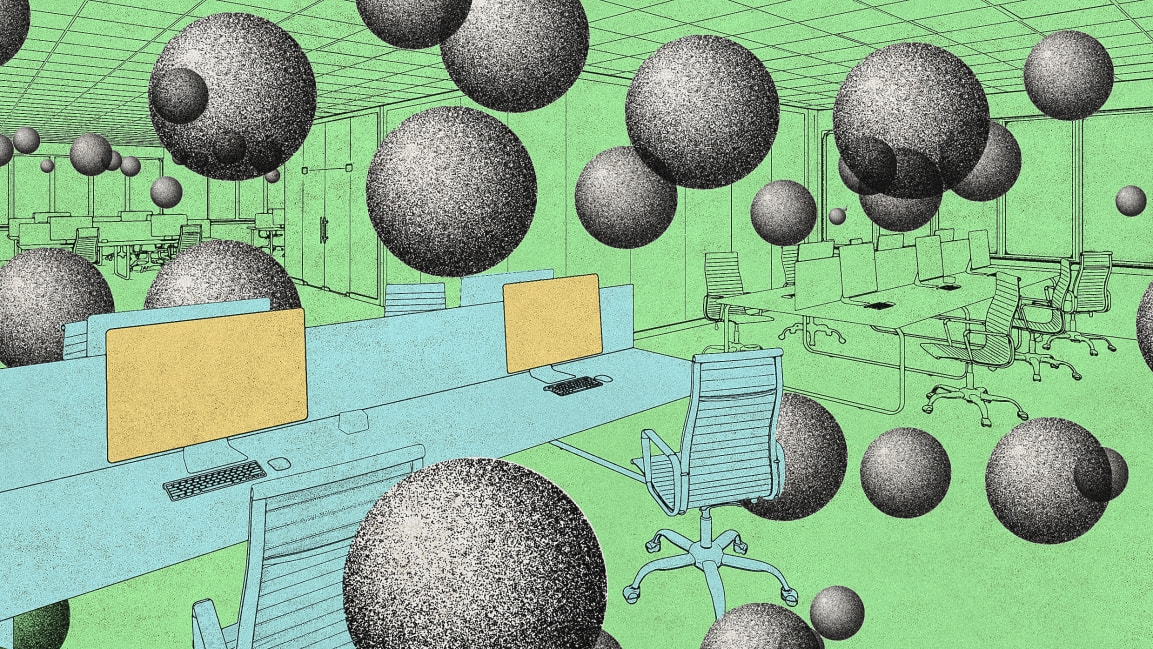Before the next pandemic, it’s time to regulate indoor air quality
At the beginning of May, more than a year into the COVID-19 pandemic, the CDC updated its guidance on how the virus spreads to acknowledge that when an infected person breathes out respiratory droplets, the virus can travel through the air to infect someone more than 6 feet away and that adding clean air to a space can help mitigate transmission risk. Though the health agency did acknowledge airborne transmission back in October, it’s a change from previous guidance that said most infections came from “close contact,” and something researchers such as Jose-Luis Jimenez, a chemistry professor at University of Colorado, Boulder, have been long awaiting.
Throughout the pandemic, Jimenez has been working with a group of researchers to acknowledge airborne transmission of COVID-19, and to author papers on how to mitigate air transmission. In July, that group gathered even more support from scientists around the world to publish a letter with 239 signatories saying it was time to address COVID-19’s airborne transmission. Now, Jimenez and 38 other researchers have published a piece in the journal Science calling for a “paradigm shift” to combat indoor respiratory infections by making sure building ventilation systems improve, so that they’re filtering and moving clean air into spaces more frequently.
Airborne transmission has long been misunderstood, the researchers write; In the early 1900s, a health figure named Charles Chapin said respiratory diseases were likely spread through close contact via large droplets that quickly fall to the ground; he basically denied that airborne transmission, via smaller particles that could be inhaled, was possible, setting off decades of misconception. In the 1950s, scientists William F. Wells and Richard L. Riley proved that airborne transmission of tuberculosis was possible, but it still didn’t change how we handled indoor air broadly.
“Finally, we hope that it is accepted that not just this virus but all respiratory viruses and diseases likely go substantially or mostly through the air,” Jimenez says, “and we really need to up our game and consider cleaning indoor air, removing viruses, and providing air that doesn’t have pathogens as a priority for our societies, much like providing [clean] water has been a priority.”
The researchers call for mandating monitors of indoor air quality, for instance by outfitting public spaces with CO2 sensors that display how much exhaled air is accumulating in a space. Ventilation and filtration systems should also be improved, with higher standards for removing airborne pathogens than the current standards, which were mostly set for parameters such as temperature, odor control, and energy use. Higher ventilation would come at the costs of higher energy bills, so a “pandemic mode” could be added to buildings, Jimenez says. The normal mode would still offer more protection against respiratory diseases than currently exists, but a “pandemic mode” would ramp up ventilation even more (but also increase energy use) if a disease was rampant.
Retrofitting building systems or ensuring new buildings are up to such levels will come with an initial cost: estimates put it at around 1% of the initial construction costs. “People don’t want to do it if there’s no regulation because they’d rather save 1%,” Jimenez says. Instead, we’re paying for the cost of respiratory diseases—their added health care costs and productivity losses. Already, experts have estimated COVID-19 cost the global economy $1 trillion in 2020. In the U.S. alone, the flu has an annual economic burden of $11.2 billion.
Echoing many other scientists, Jimenez says that the pandemic has put a spotlight on indoor air, a public health issue that has long gone ignored. Now, there’s an opportunity for that paradigm shift. The quality of indoor air has to become a priority, with technology and regulations to ensure that the air inside buildings is clean from colds, flus, and the next possible pandemic, “just as we expect,” the researchers write, “for the water coming out of our taps.”
(31)



